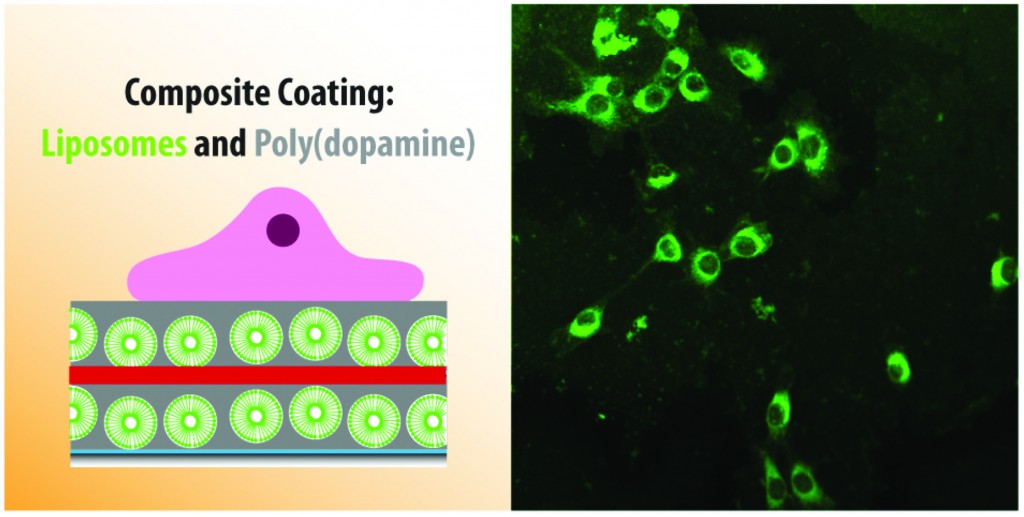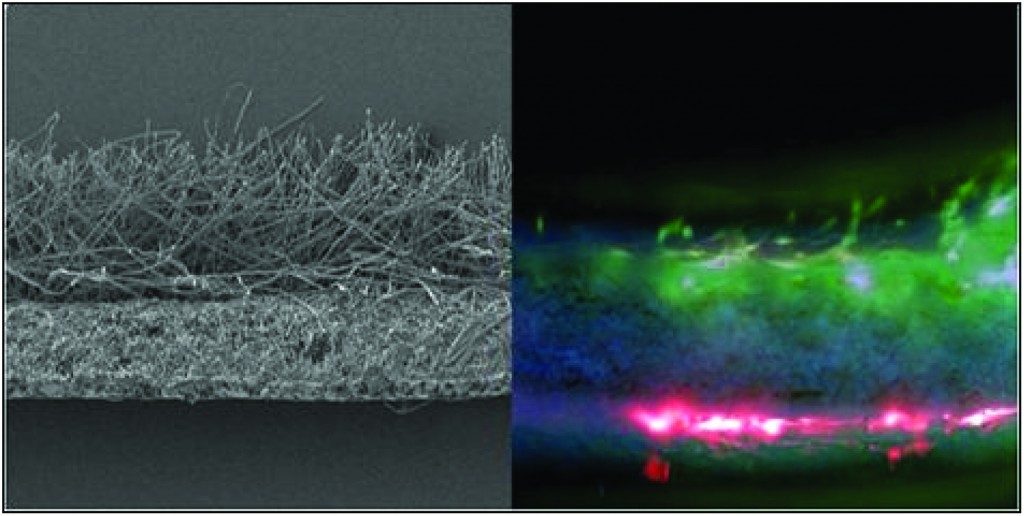Most of us are accustomed to thinking of medicinal drugs as something we ingest or inject into our bodies. However, if the drug can be introduced at the particular part of the body where it is needed the most, it will be more effective. Further, if we can slow down the release of the drug, we may be able to use less drugs for the same purpose. With these long-term goals in mind, Brigitte Städler’s group has recently published a paper where they investigate the release of drugs from a biological coating. This work can one day be used to modify the surface of implants in our body (commonly used examples include bone implants or pacemakers). Modifying the surface of these implants would allow us to use them as drug depots in our body. These implants can then release drugs more slowly into the bloodstream as opposed to all at once, thus making the drugs more effective.
The researchers used a structure known as a liposome – particles made out of fat that can potentially trap a drug in their centers – and surrounded them with a material that can be used to coat implant surfaces. They found that muscle cells could grow on these surfaces without dying, thus proving that the surfaces are not toxic. The liposomes were made out of a fat that fluoresces (emits light under certain conditions). The muscle cells could absorb these fluorescent fats, which made the cells themselves fluorescent and allowed the cells to be tracked. Next, the researchers trapped a toxic drug in the liposomes, and found that the presence of the drug meant that they could control whether the cells survived or died. While any kind of drug could in theory be trapped in the coating, a toxic drug could specifically be useful if the coating was near harmful or cancerous cells.
This work shows a great deal of promise in improving the way we deliver drugs to patients.
Cargo delivery to adhering myoblast cells from liposome-containing poly(dopamine) composite coatings
Martin E. Lynge, Boon M. Teo, Marie Baekgaard Laursen, Yan Zhang and Brigitte Städler
Biomater. Sci., 2013, Advance Article DOI: 10.1039/C3BM60107B
Debanti Sengupta recently completed her PhD in Chemistry from Stanford University. She is currently a Siebel postdoctoral scholar at the University of California, Berkeley.
Follow the latest journal news on Twitter @BioMaterSci or go to our Facebook page.
To keep up-to-date with all the latest research, sign-up to our RSS feed or Table of contents alert.













